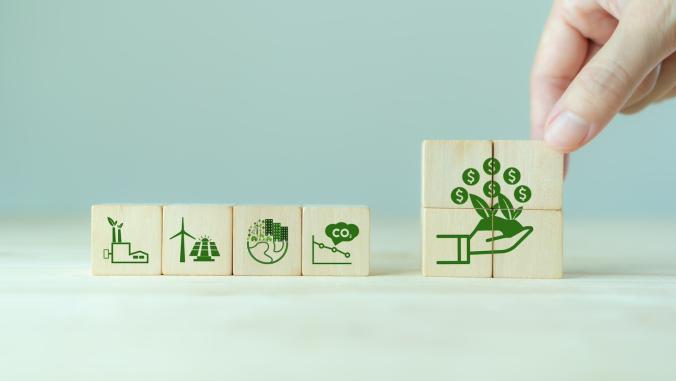Dell's discovery: Closed loops require an open mind
It has embedded a circularity-inspired materials review into product design.

So far, Dell has designed about 100 million pounds of recycled content into its products. Now, it's looking at integrating recycled gold into some of its motherboards.
This article was adapted from our newsletter VERGE Weekly, running Wednesdays. Sign up here.
"Circular economy isn’t just about closed loop, it’s about open loop," observes David Lear, vice president of corporate sustainability for Dell Technologies, the massive information technology company.
It’s also about having an open mind.
That was one of my big takeaways from my conversation last week with Lear about Dell’s longtime focus on recovery and reuse. In January, the company passed its 2020-pegged commitment to take back 2 billion pounds of used electronics — and not just its own branded stuff. (So, yes, it finished a year early.) In fact, Dell’s recycling program first took shape around 2007, when consumers and businesses really began waking up to the toxic impact of electronic waste and to the economic opportunities associated with rethinking the process.
That big number represents an admirable achievement, certainly, but just as intriguing is how Dell is willing to use the "waste" generated by its supply chain partners and by other industries to reboot its design and production processes. So far, it has designed about 100 million pounds of recycled content into its products, according to stats the company shared with me in late April.
And it’s in the process of setting its 2030 goals for embedding reclaimed materials into new offerings. One very specific, pragmatic program to watch is an initiative Dell developed in collaboration with hard-drive and information storage equipment manufacturers Seagate and Teleplan, which manage repair and maintenance services for technology.This is our opportunity to better optimize what we do with these materials.
Seagate and Teleplan together have created a process to recover rare earth-element magnets from old enterprise IT equipment that has reached its end-of-life — in the eyes of the original owners, at least. Starting in May, those reborn magnets will be used in hard drives for the Dell Latitude 5000 notebook series. The goal is to produce about 25,000 drives initially, but Dell figures that its take-back programs could quickly help Seagate manufacture roughly 300,000 of them on an annual basis.
"This is our opportunity to better optimize what we do with these materials," Lear told me.
Alongside the rare-earth magnets work, Dell is starting to include gold recovered from smartphones and other electronics in one of its notebook-tablet hybrids. The company figures that the amount of gold and silver thrown out with obsolete phones is worth more than $60 million annually.
Given that most of the usual suspects from the tech industry are perpetually looking for ways to cut costs in the manufacturing process, neither of these ideas really surprises me. However, some of the other burgeoning experiments I discussed with Lear demonstrate the sort of creative thinking it will take for real breakthroughs.
Dell is the first tech company, for example, to use carbon black ink made out of emissions and soot captured from diesel generators. The ink is used on about 125,000 boxes per month for products shipped in India (where it is sourced). Its partner in this endeavor is Chakr Innovations.It’s all interconnected.
One of the best representations of what’s possible actually may be slung over your shoulder: The water-resistant coating on some of the company’s new notebook computer carrying cases is made using the plastic layer separated from shatter-resistant automobile windshields. That polyvinyl butyral plastic theoretically minimizes the potential that the glass from your laptop will splinter. That’s great from a human safety perspective, but this material is tough to recycle.
The original idea for reusing this material came from a packaging engineer, Lear said. Indeed, there’s now a review phase during Dell’s core product development processes during which ideas of this nature are considered: "It’s all interconnected."
For perspective on the scale of this project, each bag will keep roughly one pound of these tough-to-recycle reclaimed windshields out of landfills or worse — that’s about 6 million pounds annually. As for the glass, it’s recycled and resold so it can be put to use in other loops. "A lot of the projects we’ve done required an open source mindset with industry and competitors," Lear said.





